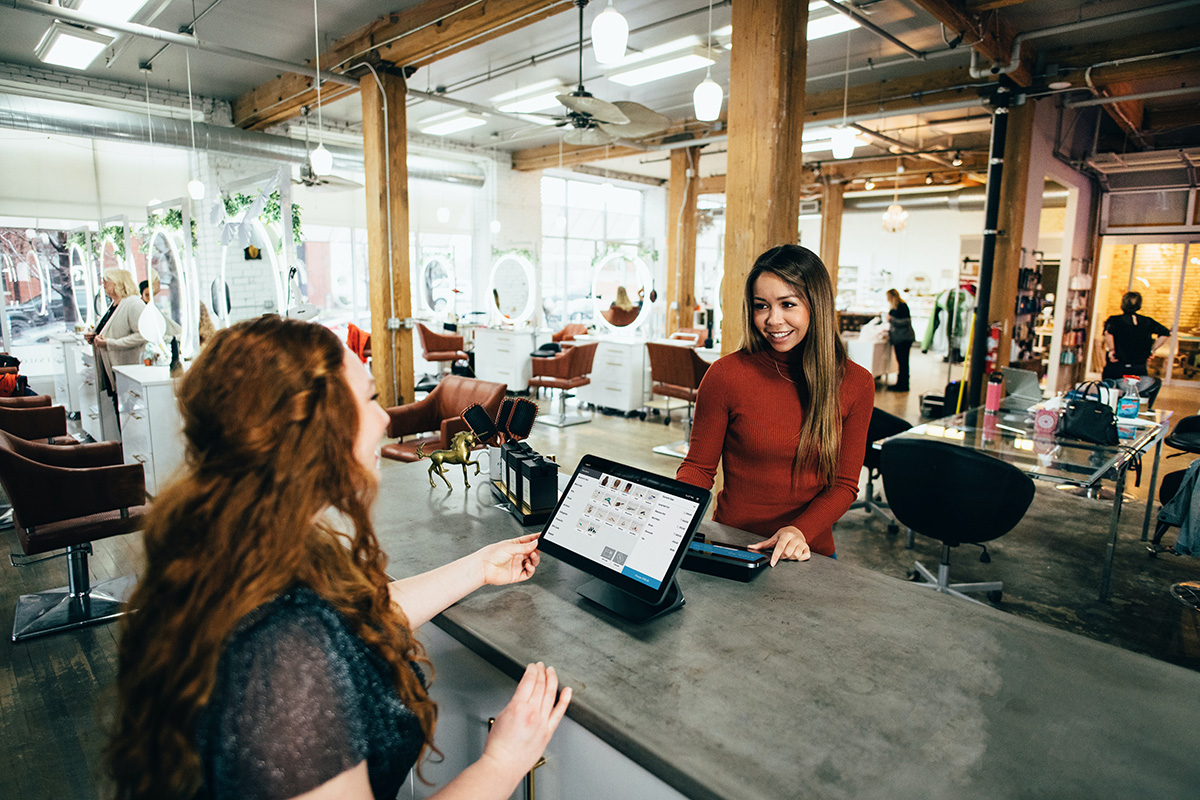With Black Friday and Cyber Monday just around the corner, many businesses are preparing their customer service departments for a serious surge in contacts. Most of these companies hope to ease the pressure on contact centre staff by using digital customer service technologies to automate a high percentage of enquiries.
The digitalisation of the customer service landscape is a trend that will only continue to snowball. Apps, AI and automation technology are not going anywhere. But this process does pose fascinating questions about what apps (and digital technology in general) are capable of.
Can they replicate the face-to-face customer service experience?
In this article, we try to answer that question by looking at the role apps currently play in customer service provision, what customers value about face-to-face interactions, and whether apps can deliver the same experience.
Apps and the Digital Customer Service Experience

Today, apps play a significant role in the customer service experience. They do so in two different ways:
- Purpose-built, business-specific customer service apps.
- Apps that incorporate features that facilitate customer service delivery. For instance, many businesses use Facebook Messenger’s Chatbot feature to deliver customer service solutions.
Both approaches are useful, valuable and necessary. In an omnichannel digital environment, companies must cater to consumers’ desire to utilise the most convenient channel. This typically means facilitating Facebook Chabot interactions (and other channels), even if you operate your own custom-built customer service app.
The benefits of app-based customer service
There are several benefits associated with app-based customer service. These include:
- Apps that allow customers to self-serve. Research shows that 70% of consumers now expect businesses to provide self-serve options (SuperOffice).
- Apps help customers navigate the customer service system. An app with a well-designed visual interface helps customers find the solution or service they are looking for as quickly as possible.
- Apps harvest data. Customer data enables you to improve service provision by ensuring you base strategic decisions on evidence. When you understand your customers (and their behaviour), you can also personalise the app for a more engaging customer experience.
- Apps offer 24/7 access to customer service tools. Customers want to engage with your business on their terms. Apps allow them to do so.
- Apps ensure speedier enquiry resolution. In most cases, using a customer service app is quicker than picking up the phone or going in-store. This is particularly true for relatively simple, high-volume enquiries.
So far, these benefits mainly pertain to efficiency gains and the advantages of digital self-service. We are yet to touch on how apps replicate face-to-face interactions.
Before we do, let’s take a quick look at what consumers like about face-to-face customer service.
What do customers value in face-to-face customer service?

With physical face-to-face customer service, customers feel valued and important. That’s a large part of the appeal. You feel important when a business dedicates time and human resources to your problem. By tackling their problem one-to-one, the brand demonstrates that the customer matters to them.
This also applies to a range of other one-to-one channels, including telephony and some digital interactions (eg. video calls). While the main focus of this article is physical face-to-face customer service, you can apply many of the lessons and insights to these other channels, too.
Beyond a sense of personal value, face-to-face customer service appeals to customers because:
- It is an easier and more efficient way of resolving complex and nuanced problems.
- Digitally inexperienced customers prefer the perceived simplicity of face-to-face interactions.
- Face-to-face interactions are humanising. Being able to put a face to a business strengthens the relationship between customer and company and helps establish trust.
- Customers sometimes use face-to-face customer service for access reasons. Not everyone has access to digital technology. Sometimes face-to-face options are the only feasible recourse.
Apps, digital technology and the changing nature of customer service
Looking at the list above, it is clear that digital technology can replicate many aspects customers value in face-to-face customer service. In fact, apps regularly provide customers with digital face-to-face solutions.
For instance, companies often utilise video call channels to help customers with complex and nuanced problems. These channels are also becoming increasingly powerful as new features are introduced. Co-browsing capabilities are a good example.
Similarly, one-to-one online chats also humanise brands. The aforementioned video calls enable customers to put a face to the brand. And Chatbot solutions are based on the premise that customers feel they are having a conversation with a real person.
Access issues are complex. Apps achieve little when customers have no access to digital devices. However, if the access issues are of a different nature (for instance, the customer has a visual impairment), apps can actually drastically improve access to customer service options. Here at The Distance, we work hard to ensure all our apps incorporate accessibility best practices and serve as many users as possible.
As digital technology becomes ever-more central to our society, the nature of face-to-face interactions is changing. We speak less in-person and more online. But we still want that face-to-face feel.
Apps can deliver that. They unite a diverse array of customer service channels to create a seamless, omnichannel system that improves the customer experience. They combine the benefits of face-to-face with the advantages of automation and digitalisation.
Can digital technology replicate face-to-face interactions?

At the moment, no technology quite captures the feeling of sitting across a table from someone or being in the presence of another human.
Maybe that will change as tech companies release increasingly powerful VR and AR applications.
However, in all other respects, digital technologies can deliver customer service to as high a standard as traditional face-to-face systems. Apps and digital technology definitely can replicate the face-to-face customer service experience.
The real question is: do we want apps to replicate face-to-face customer service?
Final thoughts
Innovative digital tech solutions are truly revolutionary. They open up a whole new world of possibilities and can transform the customer service environment. Using this technology to replicate what came before is a missed opportunity. While it is important to keep one eye on the past and learn lessons from history, we also need to look forward and explore the opportunities digital tech presents.
Why replicate face-to-face customer service when you can cherry-pick the best aspects – those parts the customers value most – and integrate them into a more efficient, effective and satisfying digital solution?
Modern customer service apps and solutions should take traditional face-to-face interactions and improve them. They should incorporate everything the customer loves about face-to-face and work it into a system that offers customers total flexibility.
The flexibility to switch between channels at a moment’s notice. Or start an enquiry by talking to a Chatbot and end it with a video call to a human advisor. Or troubleshoot their issues and quickly find a solution in a knowledge base.
Apps offer businesses a way to capitalise on the changing nature of human interaction and to build customer service systems that include everything from face-to-face video calls to automated Chatbot interactions and FAQ resources.
Here at The Distance, we don’t want our apps to replicate traditional face-to-face interactions. We want our apps to improve them.
More from our blog
- Can we help with app design and user experience (UX/UI)?
- 7 Practical strategies to boost operational efficiency in your business
- Innovate or stagnate: how mobile solutions can elevate your organisation’s vision into reality
- The domino effect of fully optimised code within mobile app development
- Why understanding UX and UI is key for product success
